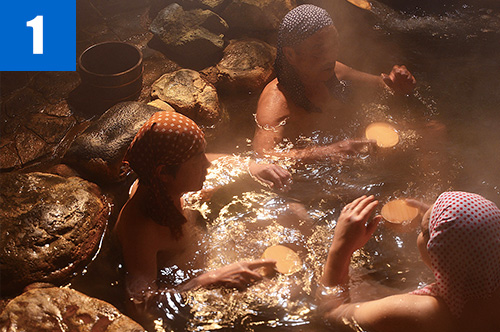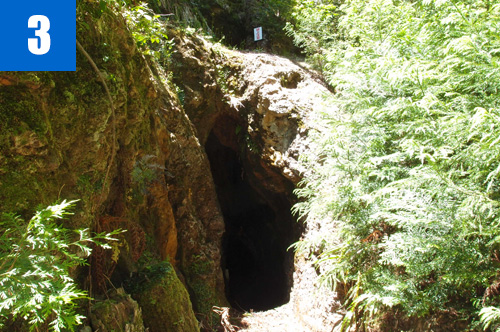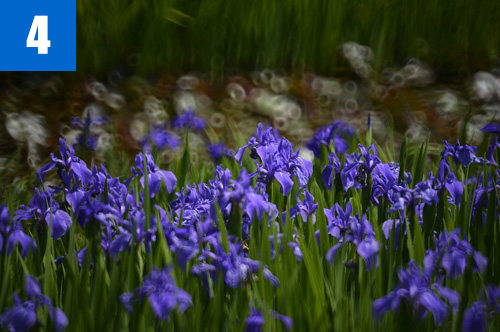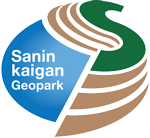In the mountains surrounding the town of Iwai Hot Springs, there used to be many mines (in Arakane and Ginzan). The gold and silver collected from these mines was brought to Iwai Station by trolley train. Many people working in these mines frequently visited Iwai Hot Springs.
(1)Iwai Hot Springs of Inaba Onsenkyo
Iwai Hot Springs is a 1200-year-old hot springs. It is believed that hot spring water rises up from faults and fractures in the Iwai Pyroclastic Strata. Out of the nine hot springs, one artesian spring and three pumped-up springs are centrally managed. Iwai Hot Springs is known for its bathing songs.
(2)Rice Terraces of Yokoo
There are terraced rice paddies on the land formed by a landslide. Consumers can invest in these terraced rice paddies as their “owners.” Rice Terraces of Yokoo are selected as one of Japan's 100 Greatest Rice Terraces.
(3)Ruins of Inaba Silver Mine
According to The Book of Inaba written in the Edo Period, a silver mine was discovered in 809. Inaba Mines used to produce a great amount of silver that could compete with that of the mines of Ikuno and Iwami. There still remain holes which are believed to have been mine holes.
(4)Karakawa Wetland (colonies of rabbitear iris)
This large wetland (about 1 hectare) is located about 400 meters above sea level. The wetland is famous for colonies of rabbitear iris. This wetland is an interesting place from a botanical viewpoint, with insectivorous plants such as sundew and a wide variety of other wetland plants.





